Top 10 ornamental grasses
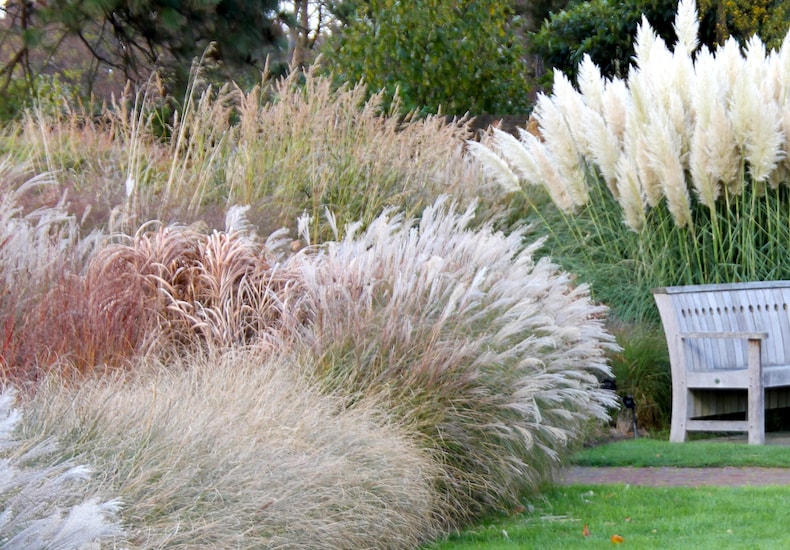
Grasses add texture, structure and movement to your garden
Image: Nurserymans Choice Grass Collection from Thompson & Morgan
Don’t underestimate the impact of ornamental grasses! Tall, architectural varieties make fabulous screens while shorter species soften the edges of borders and containers. Colourful foliage and textural flower heads bring plenty of interest, while evergreen grasses create year round structure. Most grasses associate beautifully with each other, blending gracefully into perennial borders to create a rich tapestry. You could even use them to create a prairie planting scheme.
Here are our expert horticultural team’s favourite grass plants to try:
- Imperata cylindrica ‘Rubra’
- Hakonechloa macra 'Aureola'
- Pennisetum alopecuroides
- Stipa tenuissima
- Miscanthus sinensis 'Zebrinus'
- Carex comans 'Bronze'
- Eriophorum angustifolium
- Pennisetum 'Rubrum'
- Glyceria maxima var. Variegata
- Miscanthus sinensis 'Kleine Silberspinne'
1. Imperata cylindrica ‘Rubra’
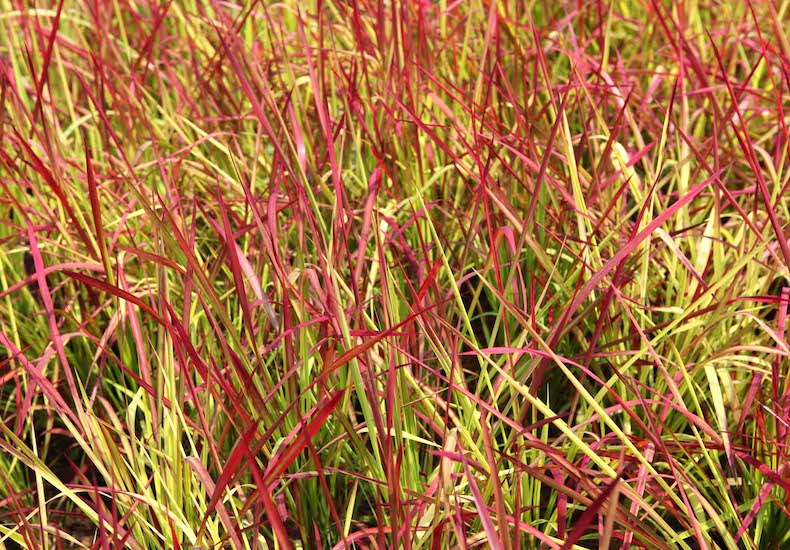
This low-maintenance grass is very brightly-coloured
Image: Imperata cylindrica ‘Rubra’ from Thompson & Morgan
If you’re looking for colour in the garden, this vibrant perennial grass is hard to beat! Slender, bright green leaf blades deepen to ruby red at the tips. By late summer the leaves have coloured to green-gold and dark garnet. Although not the hardiest grass, Imperata cylindrica ‘Rubra’ will happily grow outdoors if protected with a straw mulch in winter. Plant it in bold clumps in the herbaceous border or as part of a mixed container.
2. Hakonechloa macra 'Aureola'
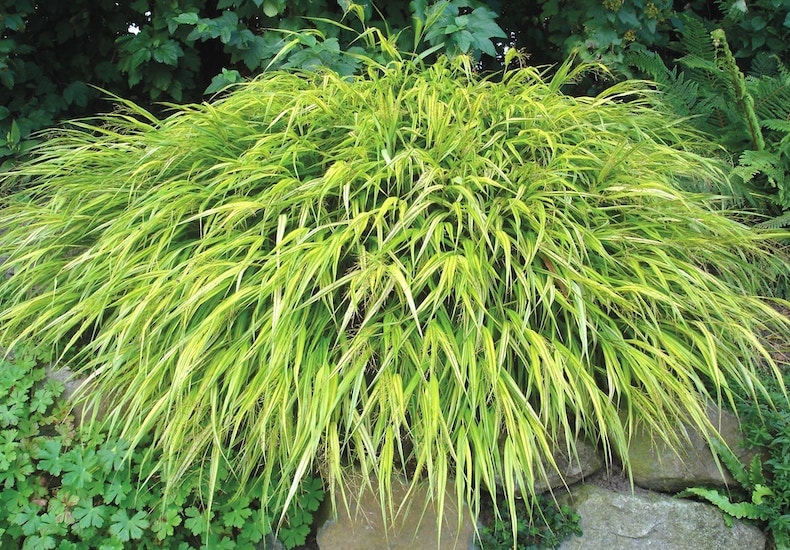
Hakonechloa macra 'Aureola' is a clump forming grass that looks great in containers
Image: Hakonechloa macra 'Aureola' from Thompson & Morgan
Hakonechloa macra 'Aureola' is a stunning ornamental grass with an elegant, cascading habit. This is a great choice for containers and Japanese gardens where its golden striped foliage forms a wonderful, rounded clump. Equally good as a single specimen or planted in bold groups to form dense ground cover.
3. Pennisetum alopecuroides
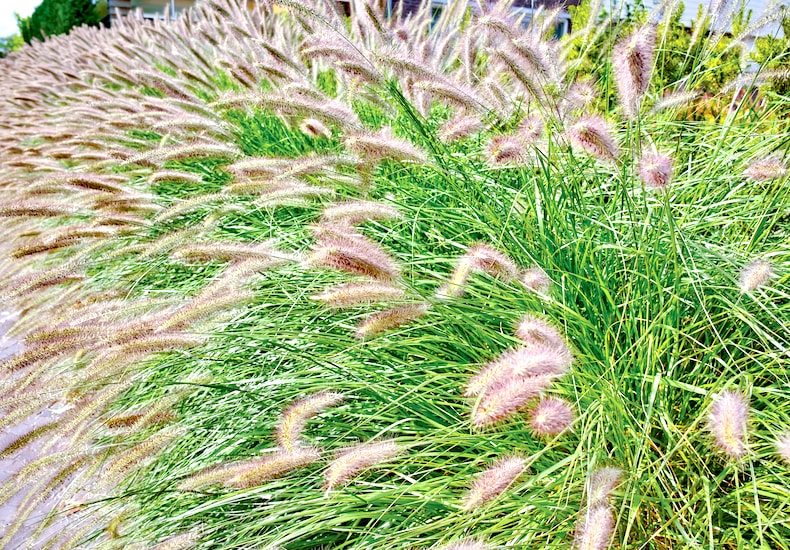
Pennisetum alopecuroides provides almost all year round interest
Image: Pennisetum alopecuroides from Thompson & Morgan
It’s hard to resist touching the fluffy flower heads of Pennisetum alopecuroides! These bottle-brush flowers create a swaying haze above clumps of slender green foliage in summer - perfect for adding texture to borders and softening the silhouettes of late summer perennials. The foliage is fairly unremarkable, so this grass is best planted among other grasses or spring flowering perennials to provide interest earlier in the year. P. ‘Hameln’ has longer, less cylindrical flower heads, while P.‘Hameln Gold’ brings a splash of bright yellow foliage to the garden.
4. Stipa tenuissima
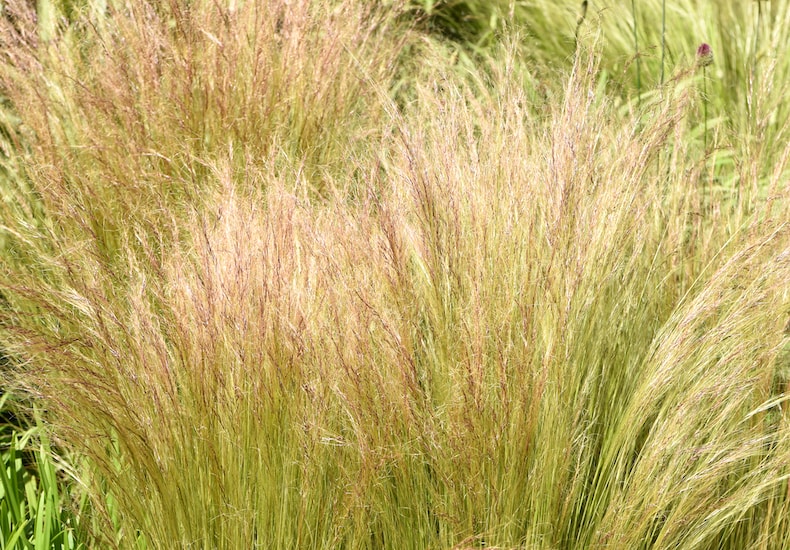
Stipa tenuissima is a tactile, deciduous grass that produces fluffy flowerheads
Image: Stipa tenuissima from Thompson & Morgan
Stipa tenuissima is one of my favourites, and for good reason! This hardy grass forms a neat clump of fine, thread-like blades which create a fabulous billowing movement in summer borders. It requires virtually no maintenance once established, happily tolerating hot, dry soils. Perfect for adding a soft, wispy feel to gravel gardens and borders, it associates well with other grasses and perennials. A word of warning though - if happy, this hardy grass will seed freely, often popping up elsewhere in the garden!
5. Miscanthus sinensis 'Zebrinus'
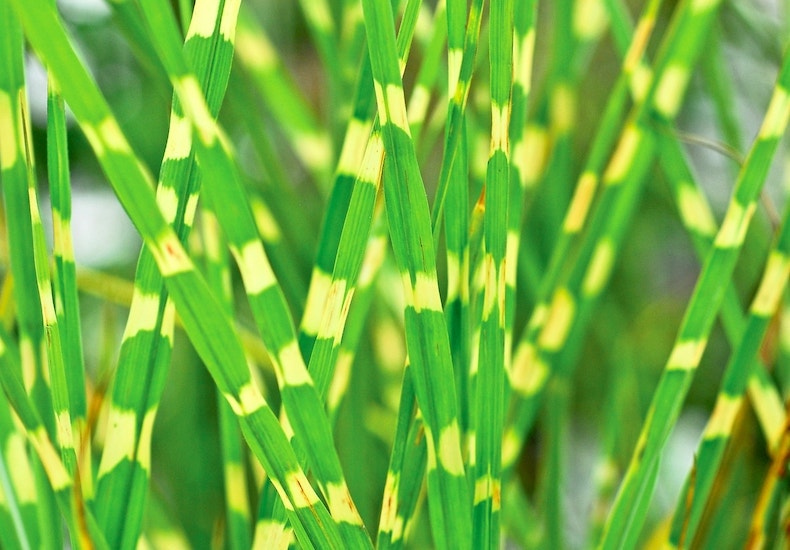
Miscanthus sinensis 'Zebrinus’ has distinctive cream stripes
Image: Miscanthus sinensis 'Zebrinus' from Thompson & Morgan
Miscanthus sinensis 'Zebrinus' is an excellent grass for adding height and structure to the back of borders. This eye-catching grass is best known for its early summer foliage with distinctive cream bands that stripe each blade. By late summer the foliage has turned to gold, accompanied by tall plumes of copper-pink flower that make a showy architectural feature. The vertical stems are well worth leaving to provide dramatic winter interest. M. sinensis 'Strictus' is visually very similar, though a little taller.
6. Carex comans 'Bronze'
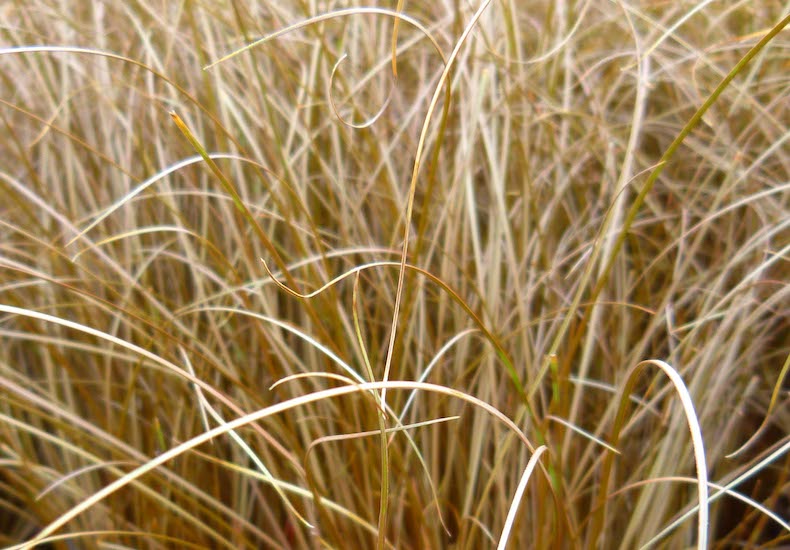
The hair-like bronze leaves of Carex comans 'Bronze' provide movement and texture
Image: Carex comans 'Bronze' from Thompson & Morgan
Carex comans 'Bronze' is a superb sedge grass with stiff, wiry foliage that arches from a neat mound. Grown for its unusual bronze colour and evergreen foliage, it makes the perfect addition to winter containers. The foliage softens edges, adds colour and provides fabulous texture. Hardy, compact and drought tolerant, this low maintenance Carex is easy to grow in any well drained soil. For darker brown, pink-tinged foliage try C. ‘Milk Chocolate’.
7. Eriophorum angustifolium
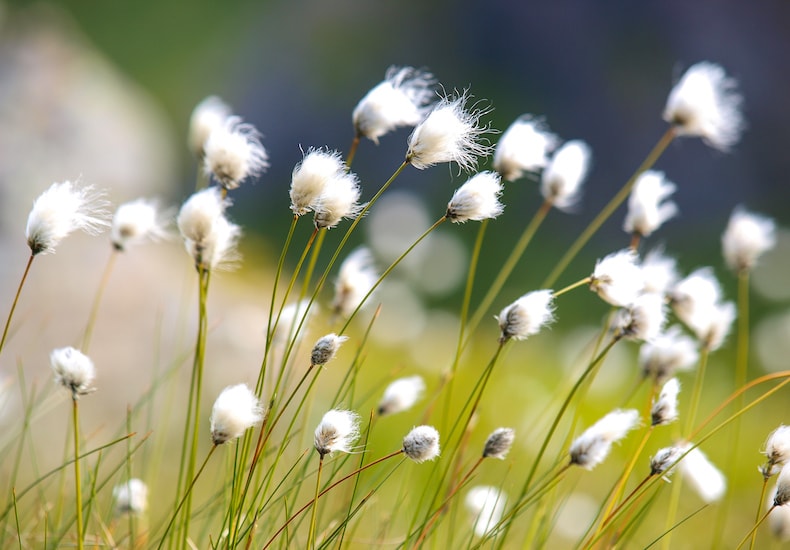
This appealing British native is often seen on boggy peatlands or used as a marginal aquatic
Image: Eriophorum angustifolium from Thompson & Morgan
Eriophorum angustifolium is commonly known as Cotton grass - it’s easy to see why! This British native is found in acid, peat bogs where it spreads to form an evergreen colony of rather unremarkable foliage. However, the fluffy white flower heads are far from ordinary, having the appearance of fluffy rabbits’ tails. If you are able to offer a boggy, acid soil, this hardy perennial makes a superb marginal aquatic for natural planting schemes.
8. Pennisetum 'Rubrum'
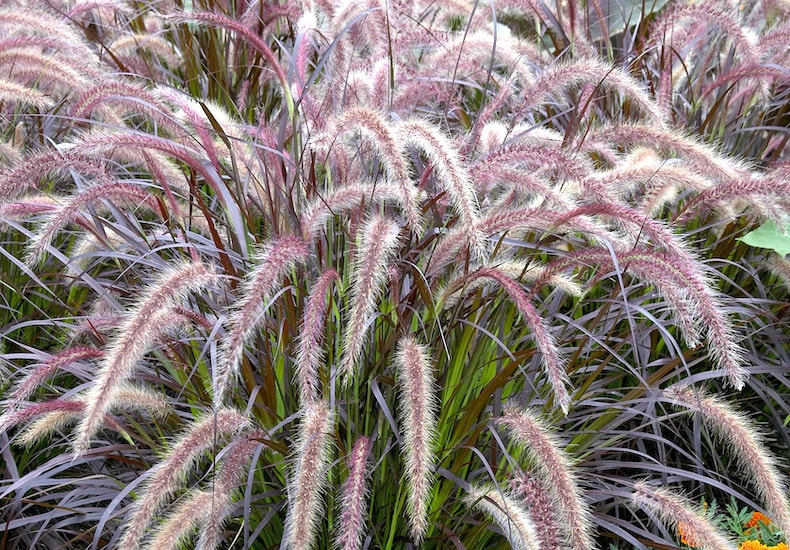
The showy purple flower spikes of Pennisetum 'Rubrum' appear from mid-summer to autumn
Image: Pennisetum 'Rubrum' from Thompson & Morgan
Pennisetum 'Rubrum' is quite spectacular! Its dark maroon foliage forms an arching clump that deepens to burgundy throughout the growing season. In late summer it is topped with a sumptuous display of slender, fluffy, red flower heads that droop demurely towards the ground. This vibrant grass makes a fabulous feature plant, providing architecture and colour to the garden. Although frost hardy, it’s best protected from cold, wet winter weather.
9. Glyceria maxima var. Variegata
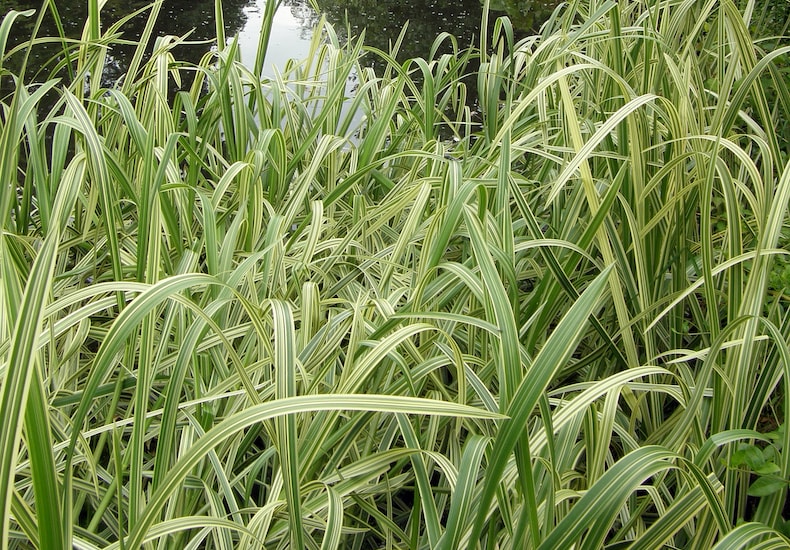
Variegated Reed Sweet-grass grows vigorously around large ponds
Image: Glyceria maxima var. Variegata from Thompson & Morgan
Grasses grow across a wide range of conditions - this one loves to have wet feet! Glyceria maxima var. variegata can be planted up to 25cm (10") below water level, making an eye-catching marginal aquatic. The foliage emerges with a pink tinge, maturing to green and yellow with an elegant variegated pattern. Loose, airy flower heads appear in late summer, bringing a lovely textural contrast. For a more natural looking display choose the species, G. maxima, which has simple, bright green foliage. This hardy grass is best grown in large ponds where it has room to spread and develop dense stands that offer good cover for wildlife.
10. Miscanthus sinensis 'Kleine Silberspinne'
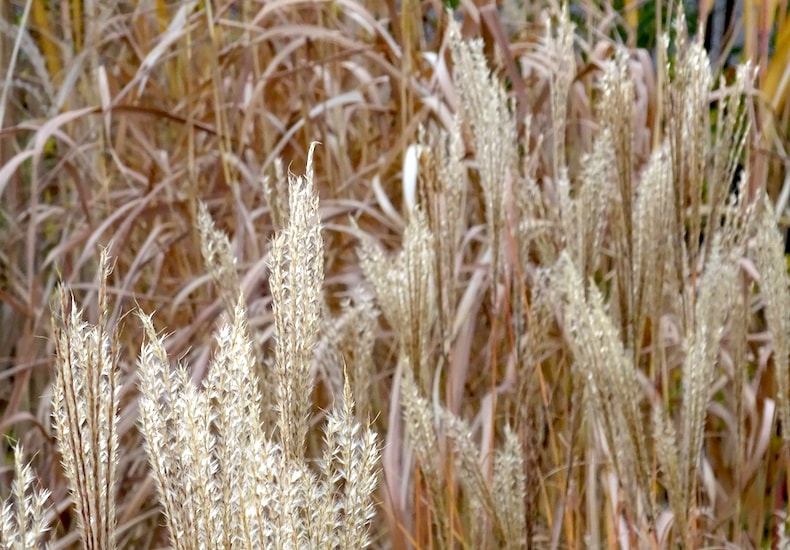
The long, feathery flower panicles of 'Kleine Silberspinne' are ideal for borders and vases
Image: Miscanthus sinensis 'Kleine Silberspinne' from Thompson & Morgan
Miscanthus sinensis 'Kleine Silberspinne' makes an excellent cut flower! Bronze-pink, feathery panicles rise on tall, slender stems in late summer, turning silvery white as they mature. This is a magnificent structural grass that remains neat and compact, despite its height, so it won’t need much space. Definitely a plant for the back of the border, where it will add plenty of late summer interest and architectural structure.
See all Top 10 articles
Popular Top 10 Articles
- Top 10 Winter Vegetables
- Top 10 Potato Varieties
- Top 10 Easy-to-grow Fruit
- Top 10 Winter Bedding Plants
- Top 10 Summer Bedding Plants
- Top 10 Spring Flowering Bulbs
- Top 10 Summer Flowering Bulbs
- Top 10 Autumn/ Winter Flowering Bulbs
- Top 10 Evergreen Shrubs
- Top 10 Evergreen Shrubs for Small Gardens
- Top 10 Easy-to-grow Flowers
- Top 10 Cut Flowers
- Top 10 Hanging Basket Plants
- Top 10 Plants for Patios
- Top 10 Houseplants
- Top 10 Climbing Plants
- Top 10 Perennial Plants
- Top 10 Hardy Plants for Winter
- Top 10 Winter Garden Tips

Written by: Sue Sanderson
Plants and gardens have always been a big part of my life. I can remember helping my Dad to prick out seedlings, even before I could see over the top of the potting bench. As an adult, I trained at Writtle College where I received my degree, BSc. (Hons) Horticulture. After working in a specialist plantsman's nursery, and later, as a consulting arboriculturalist, I joined Thompson & Morgan in 2008. Initially looking after the grounds and coordinating the plant trials, I now support the web team offering horticultural advice online.Sign Up For Exclusive Special Offers




© 2025 Thompson & Morgan. All rights reserved. A division of Branded Garden Products Limited.



